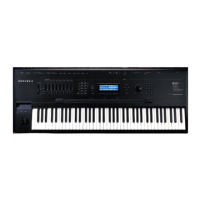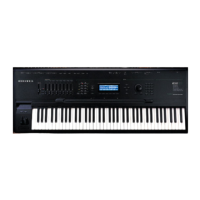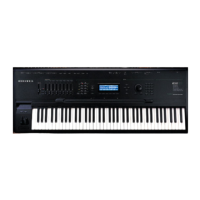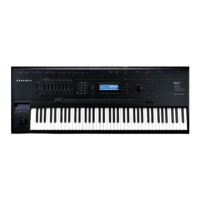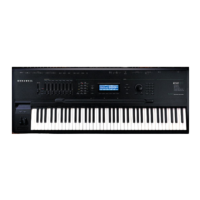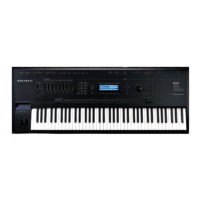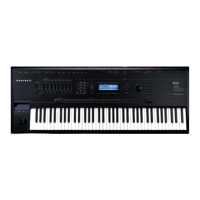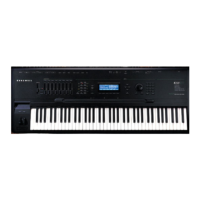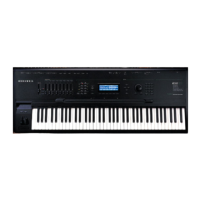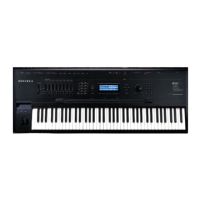Disk Mode
Disk Mode Functions
13-15
Root Key and
Stereo Indicator
Object Type ID Name (samples only) Size
Sample||203|Tenor|Sax3|||||||||F#3S|||||198K
The ID numbers are the same numbers that were used to reference the objects when the file was
last saved by the K2500. These numbers will usually be different after the objects are loaded in,
depending upon the bank (i.e. 200...299) and mode that is specified for loading. There is more
information on these modes below, in the section "Load Function Dialog."
The Size field is interpreted differently for samples and non-samples. For non-samples (i.e.
Songs, Programs, etc.), it shows the number of bytes used by the object in the file, and hence the
amount of program memory that the object will occupy in the K2500. For samples, the size
field shows the size of the all sample data associated with the object, and is displayed in
kilobytes (K).
For samples, the letter 'S' after the root key indicates a stereo sample.
Due to display space constraints, if the sample's root key happens to be in the lowest MIDI
octave range (i.e. C -1 through B -1), it will be displayed in a truncated form. For instance, if a
sample's root key was set to G#-1, the display would read:
Sample||293|Tenor|Sax||||G#-||||198K
The status line at the top of the screen specifies the object function being performed,
Func:LOAD||||
the number of selected objects in the list followed by the total number of objects in the file,
||Sel:0/5|||,
and the current list index:
|Index:1|
As with the file list, entering in a number from the numeric keypad will jump to the indexed
entry, and typing in a large number like 9999 will go to the end of the list.
The soft buttons on this page are used for multiple selection of the objects in the list as well as
for moving around the list when there are many items selected or listed. This same dialog is
also used for many other functions in the K2500, namely for saving selected objects to disk and
for several object utility functions that are described later.
Here is a brief description of each button's function, followed by a detailed explanation of its
operation.
Select Select or deselect an object.
Next Jump to the next selected object.
Type Jump to the next object of a different type.
Multi Go to the Multiple Object Selector page.
OK Tell K2500 to proceed to load the selected objects.
Cancel Exit back to the File List Dialog.
Press the Select button to choose the highlighted object for loading. An asterisk (*) is placed in
between the object name and the object ID for any items that are selected. Deselect a selected
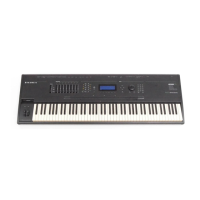
